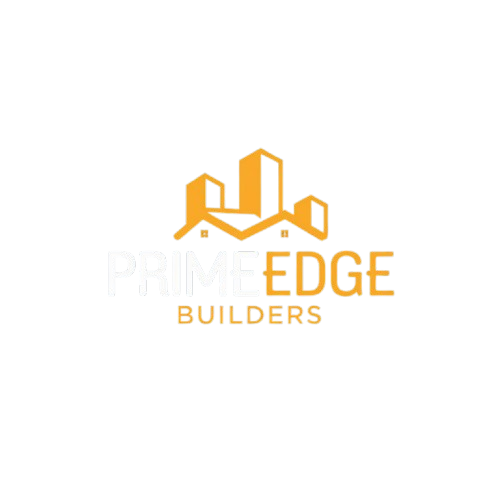"10 Expert Steps to Build Your Dream Home: The Ultimate Guide.
- CodeFlowSolutions Solutions

- Feb 6
- 4 min read
Updated: Feb 8
Building your dream home is not just about bricks and mortar; it's about creating a space that reflects who you are. From the initial concept to moving in, the entire process can be both exciting and daunting. By following these ten expert steps, you can transform your vision into reality with confidence and ease.
Step 1: Define Your Vision and Budget
Start by clarifying what you want in your new home. Do you want an open floor plan, three bedrooms, or a garden? Make a list of your must-haves, such as a spacious kitchen or a home office, alongside any nice-to-have features, like a swimming pool.
Setting a budget is essential. Research shows that nearly 20% of home builders underestimate their overall costs, which can lead to stress and delays. Include expenses like:
Land acquisition
Construction materials
Labor
Permits
Adding a cushion of 10-15% for unexpected costs will safeguard against surprises along the way.
Step 2: Choose the Right Location
The right location is pivotal to your family’s lifestyle. Research neighborhoods based on factors like distance to work, school quality, nearby amenities, and public transportation. For instance, homes close to highly-rated schools can appreciate by 10-25% more over the years compared to those in less desirable areas.
Consider geographical factors too. If you live in a region prone to heavy snowfall, look for homes with good roof design and insulation. Visit multiple neighborhoods at different times of day to gauge traffic patterns and community vibe.
Step 3: Hire a Team of Professionals
Selecting qualified professionals can greatly influence your project's success. Consider hiring:
An architect to design your layout
A structural engineer to ensure safety and compliance
A reputable contractor who has experience in your desired build type
For example, hiring an architect can improve your home’s energy efficiency by as much as 30%, which leads to lower utility bills over time.
Step 4: Design Your Home
Now it’s time to get creative! Collaborate closely with your architect to draft plans that reflect your ideas while respecting your budget.
Maximize light and space; consider an open living area that connects with the outdoors. This not only enhances your lifestyle but can increase your property's value. Homes with open layouts often sell 15% higher than more traditional designs.
Step 5: Obtain Necessary Permits
Before breaking ground, acquiring the necessary permits is crucial. This process may involve documentation, fees, and inspections, which can take weeks or even months.
Starting early can help prevent delays in your timeline. Research local regulations thoroughly; even minor changes to your plans may require resubmission or additional adjustments.
Step 6: Break Ground
This is where the excitement truly begins! Once permits are secured, your construction team will prepare the site. This involves clearing, excavation, and foundation work.
A solid foundation is key—it supports the entire structure and prevents future issues. A poorly laid foundation can compromise the integrity of your home, potentially costing 15-20% in repairs down the line.
Step 7: Frame Your Home
With a secure foundation in place, it’s time to frame your home. This phase constructs the skeleton that supports walls, floors, and roofs.
Regular communication with your contractor is vital here to ensure that everything aligns with your plans. Ask for updates and visual confirmations to keep the project on track.
Step 8: Install Systems
Next, critical systems like plumbing, electrical wiring, and heating, ventilation, and air conditioning (HVAC) are installed. These systems are essential for your home’s comfort and functionality.
Choosing high-quality materials can save you from future disruptions. Research indicates that upgrading to energy-efficient systems can reduce utility costs by up to 40%. Remember to test systems thoroughly before closing up walls to avoid costly repairs later.
Step 9: Finish the Interior and Exterior
With the functional systems in place, it’s time to select your finishes. This is where your home begins to reflect your personal style.
When picking elements like paint, flooring, and cabinets, consider trends and durability. For instance, hardwood flooring is not only stylish but also has a lifespan of 30 years or more, making it a long-term investment. Don't overlook landscaping; well-designed outdoor areas can significantly boost your home's overall appeal.
Step 10: Final Inspection and Moving In
The final step involves a thorough inspection to ensure everything meets safety standards. After addressing any required fixes, you’ll receive a certificate of occupancy, signaling that your home is ready.
Soon after, it will be time to move in. This marks the culmination of your hard work and planning. Enjoy the space you have created, and take pride in the journey that brought you here.
Your Journey Begins Here
Constructing your dream home is a significant endeavor filled with challenges and rewards. By defining your vision, choosing the right location, collaborating with skilled professionals, and following through with clear plans, you can achieve the home you desire. Embrace the process, stay organized, and remember that your dream home is now just a few steps away!




Comments